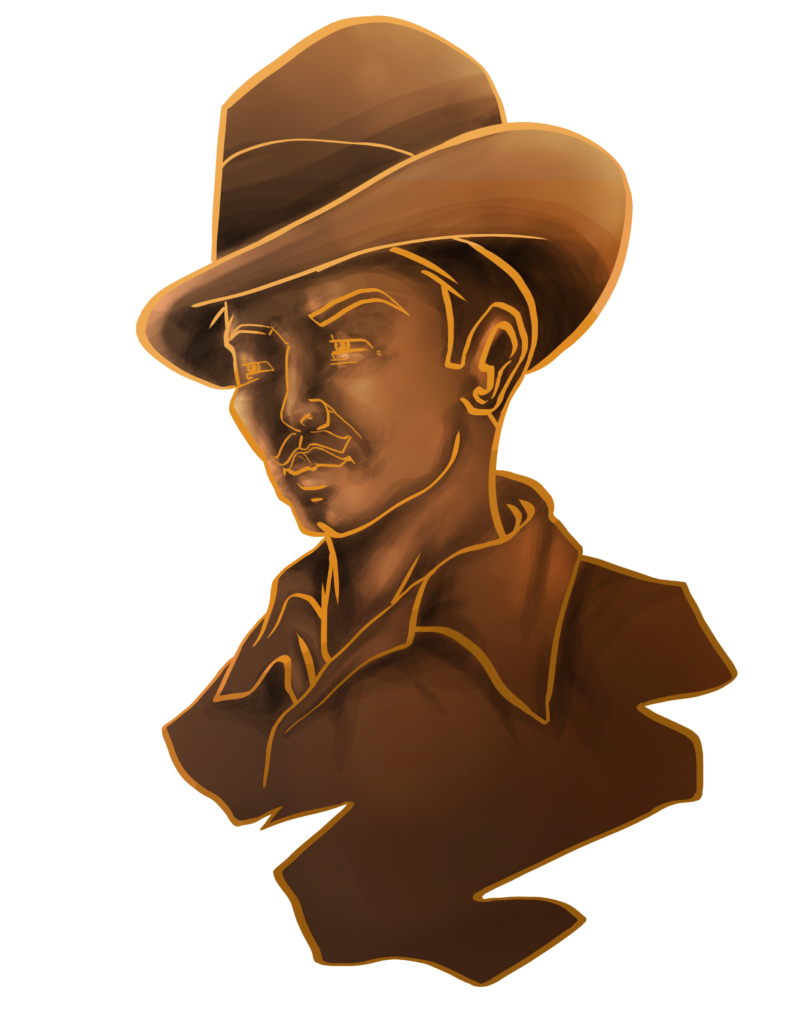RE: Remove the Gandhi statue from Richcraft Hall, Nov. 9-15
In a time where those whose legacies we encased in stone are being re-evaluated, yet another such example has been placed under scrutiny: Mohandas Karamchand Gandhi, a toweringly humble figure whose honorific “Mahatma” conjures up a venerable soul who embodies the cultural profundity and wisdom India has to offer.
The Gandhi statue was put in place to honour Canada-India relations given that the Canada-India Centre for Excellence in Science, Technology, Trade, and Policy is housed in Richcraft Hall.
And yet, as my friend Kenneth highlights, Gandhi’s controversial views on race from his time in South Africa (where he laid ideological foundations for non-violent efforts to liberate India and for future visionary leaders like Julius Nyerere, Martin Luther King Jr., and Nelson Mandela) have cast darkness on that deified legacy.
I neither wish to stoke the impassioned flames of the statue removal debate, nor dispute the immense impact Gandhi had on the struggle for freedom of oppressed peoples.
However, contributing to this debate is vital as a proud Indian. At a time where South Asians are more divided than ever and actively continue to buy into colonial colourist and racist narratives and meekly accept Britain’s economic exploitation and political fragmentation of the Subcontinent, an Indian activist’s statue is crucial to remind the community of its political necessity beyond just disempowerment and “model minority” status.
So who could we put in Gandhi’s place?
 One candidate is Shaheed-e-Azam Bhagat Singh: a tall, turbaned college student who abandoned his studies to join the Hindustan Socialist Republican Association, inspired by the ruthless massacre of hundreds of unarmed civilians at Amritsar in 1919 and the failure of Gandhi’s 1922 non-violent Non-Cooperation movement.
One candidate is Shaheed-e-Azam Bhagat Singh: a tall, turbaned college student who abandoned his studies to join the Hindustan Socialist Republican Association, inspired by the ruthless massacre of hundreds of unarmed civilians at Amritsar in 1919 and the failure of Gandhi’s 1922 non-violent Non-Cooperation movement.
He was an active academic, writing several articles for pro-independence publications, in addition to several political and philosophical essays. However, his ardour for justice was inflamed after senior activist and personal mentor Lala Lajpat Rai was beaten to death by police in 1928. Bhagat made a daring move, assassinating a policeman responsible for the murder. In 1929, he entered the sham legislature set up by the colonizers to give Indians a testimonial voice and threw two smoke bombs, accompanied by leaflets denouncing imperialism and colonialism.
During his trial, he reasoned that despite his strong belief in human life’s sanctity, British injustices warranted “a loud voice to make the deaf hear.” Convicted of not only this act of defiance but the assassination as well, he was sentenced to death along with two comrades. However, even facing the rope, he was unafraid: Bhagat boldly read his bomb-making instructions to the press in court, and used his dock as a pulpit to call for revolution. He launched a hunger strike for better prisoner treatment that won both the nation’s sympathy and folk hero status. He went smiling to the gallows on March 23, 1931: “Long Live the Revolution” the final breath of his 23 short years.
But why him? Simply put, Bhagat Singh wholly rejected the British-sown seeds of Hindu-Muslim disunity that would lead to the imperialist Partition, believed in liberation for all Indian nations (including Adivasi peoples), and worked tirelessly to dismantle the sexism and casteism pervading colonized Indian culture.
He spent his short life on the front lines, fighting and making a difference, and was prepared to sacrifice everything for his ideals and for freedom. Perhaps we should rethink complete deference to the respectability of age, and adopt a new, young role model of the same tenacity and fervor that we enter academia hoping to embrace and inspire.
His fierce dedication to a greater cause is very deserving of being a bronze compass for change in our community, as his parting letter poignantly summarizes: “My life has been dedicated to the noblest cause, that of the freedom of the country. Therefore, there is no rest or worldly desire that can lure me now.”
Graphic by Manoj Thayalan






